Homework 3 Solutions - Extensive form games, subgame perfect equilibrium and repeated games
-
Obtain the Nash equilibrium for the following games using backward induction:
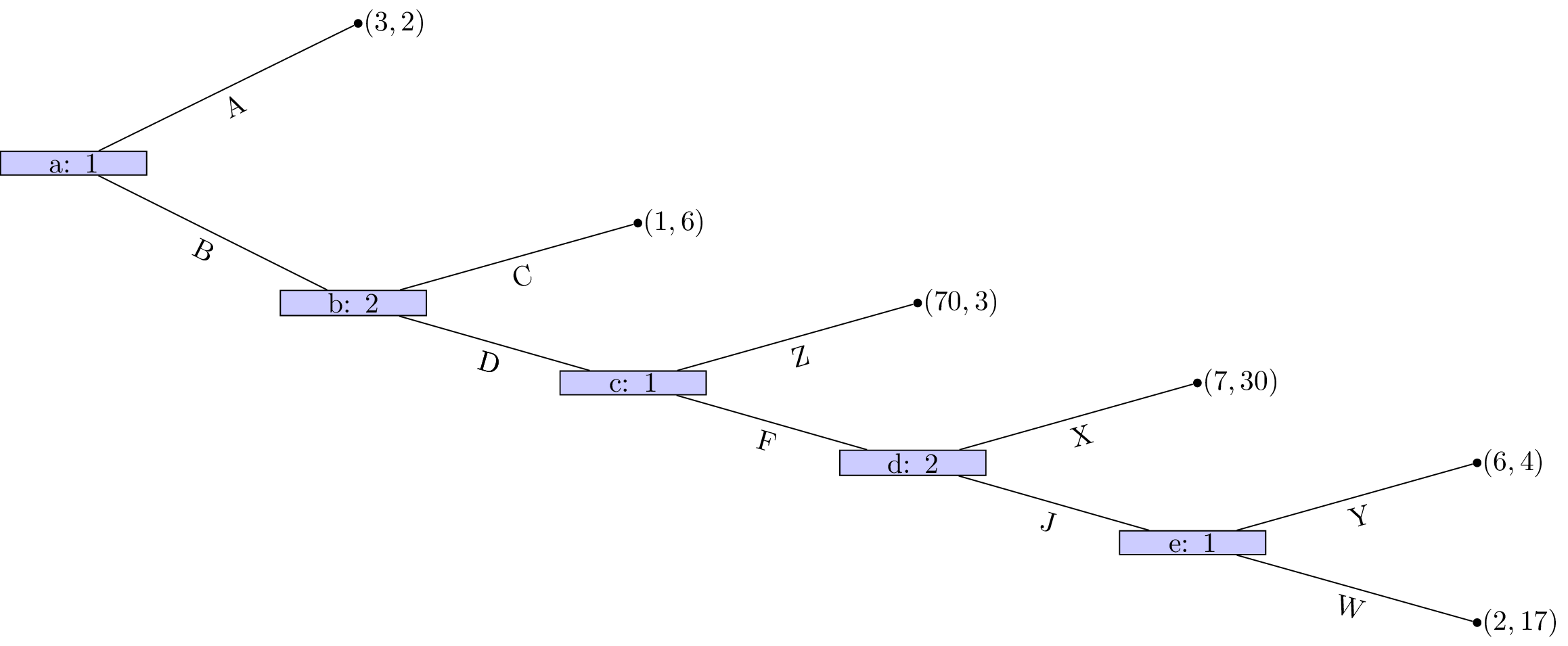
Solution
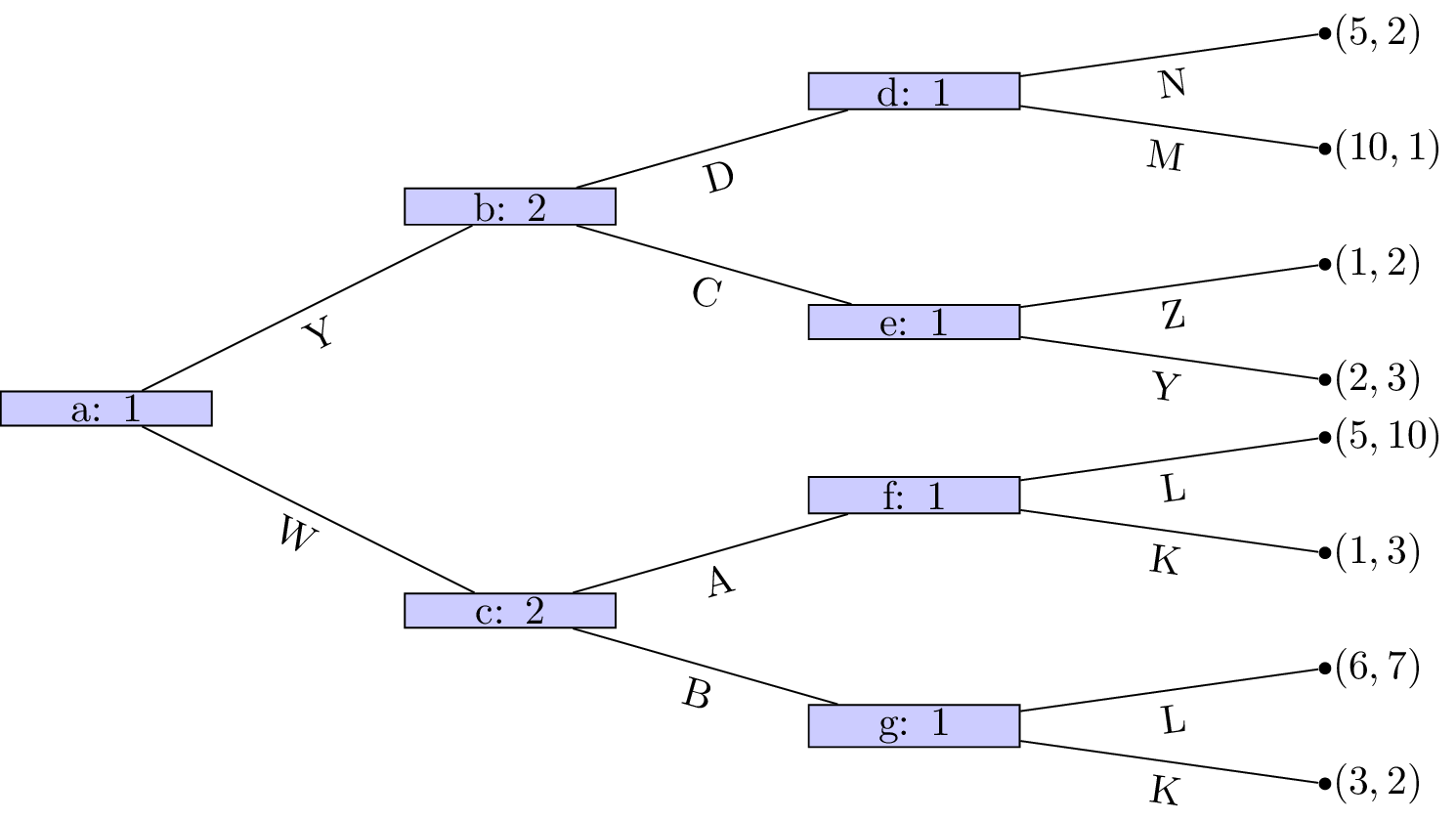
Solution
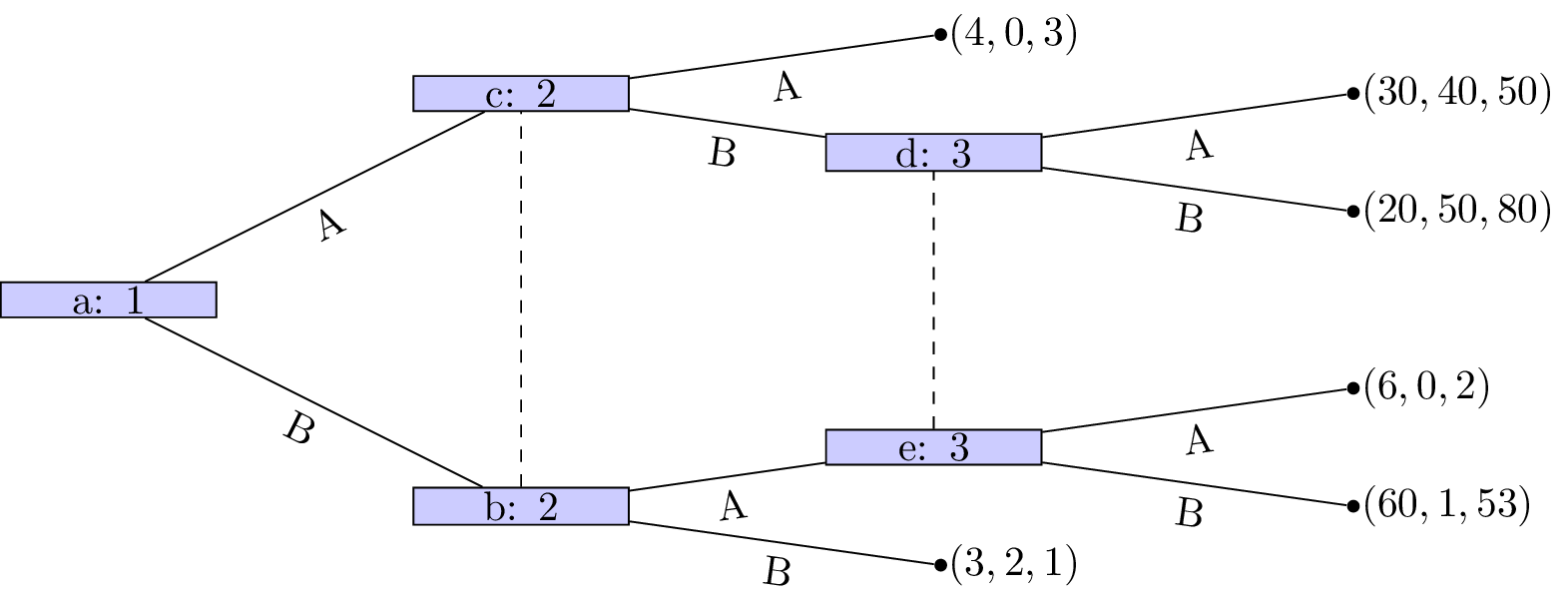
For \(P_3\), \(B\) dominates \(A\), for \(P_2\), \(B\) dominates \(A\), finally \(A\) dominates \(B\) for \(P_1\):
Solution

Solution
-
Obtain the Nash equilibrium for the following game:
Player 1 chooses a number \(x\geq 0\), which player 2 observes. After this simulataneously and independatly player 1 and player 2 choose \(y_1, y_2\in\mathbb{R}\) respectively. The utility to player 1 is given by \(2y_2y_1+xy_1-y_1^2-x^3/3\) and the utility to player 2 is given by \(-(y_1-2y_2)^2\).
Solution
For given \(x\): \(y_1\) maximises \(2y_2y_1+xy_1-y_1^2-x^3/3\), thus \(y_1^*\) is a solution to:
(As the function has a local maxima which is global)
so:
Similarly:
Thus \((\tilde y_1, \tilde y_2)\) solve the following system of equations:
Thus:
This gives \(u_1=x^2+x^2-x^2-x^3/3=x^2(1-x/3)\) which has a maxima at \(x=2\) for \(x\geq 0\). This gives:
-
For each of the following games:
- Identify all subgames.
- Identify the corresponding normal form representations and hence obtain all Nash equilibrium.
- Identify which Nash equilibrium are also subgame perfect Nash equilibrium.
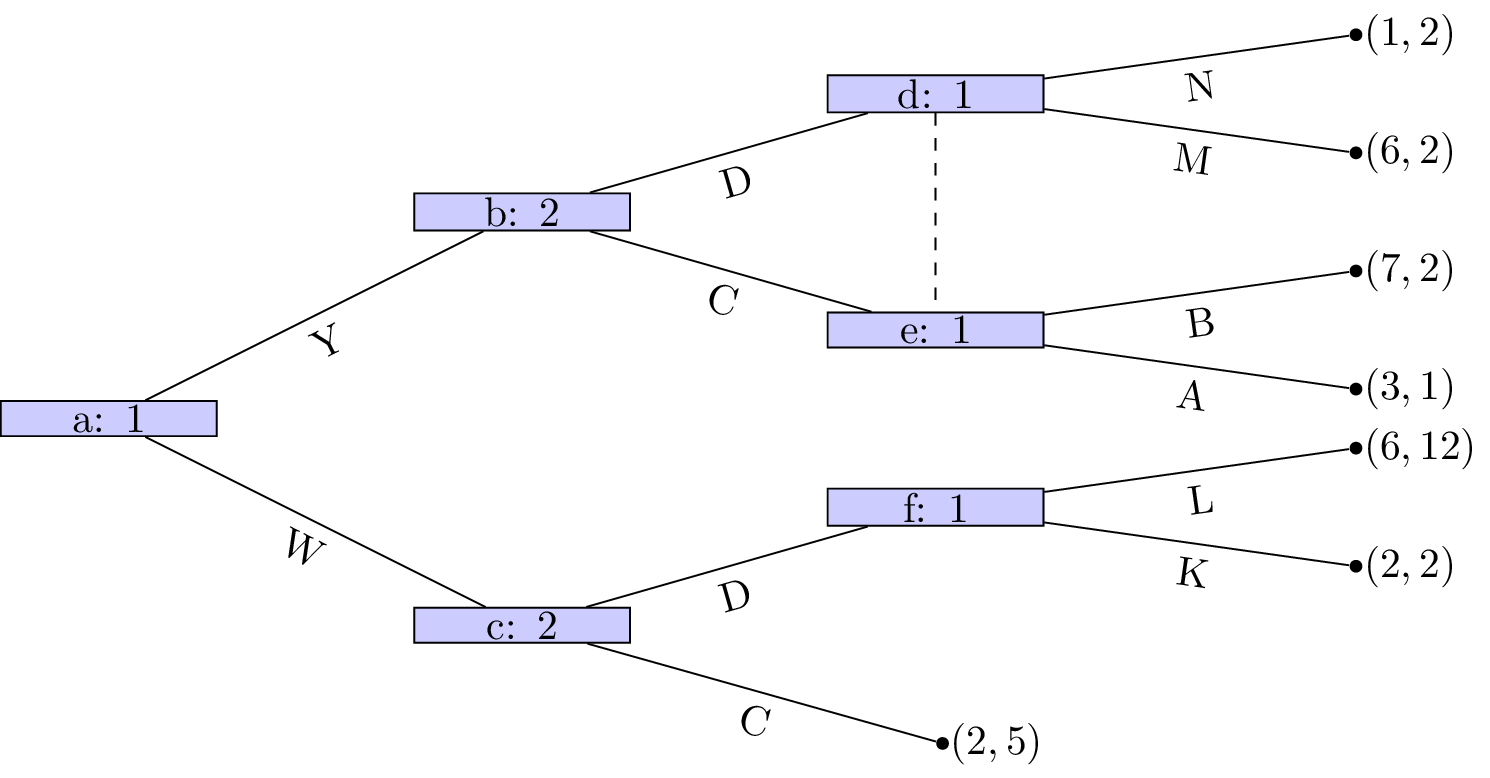
Solution
Not a valid game (node d and e are in same information set but have different action sets).
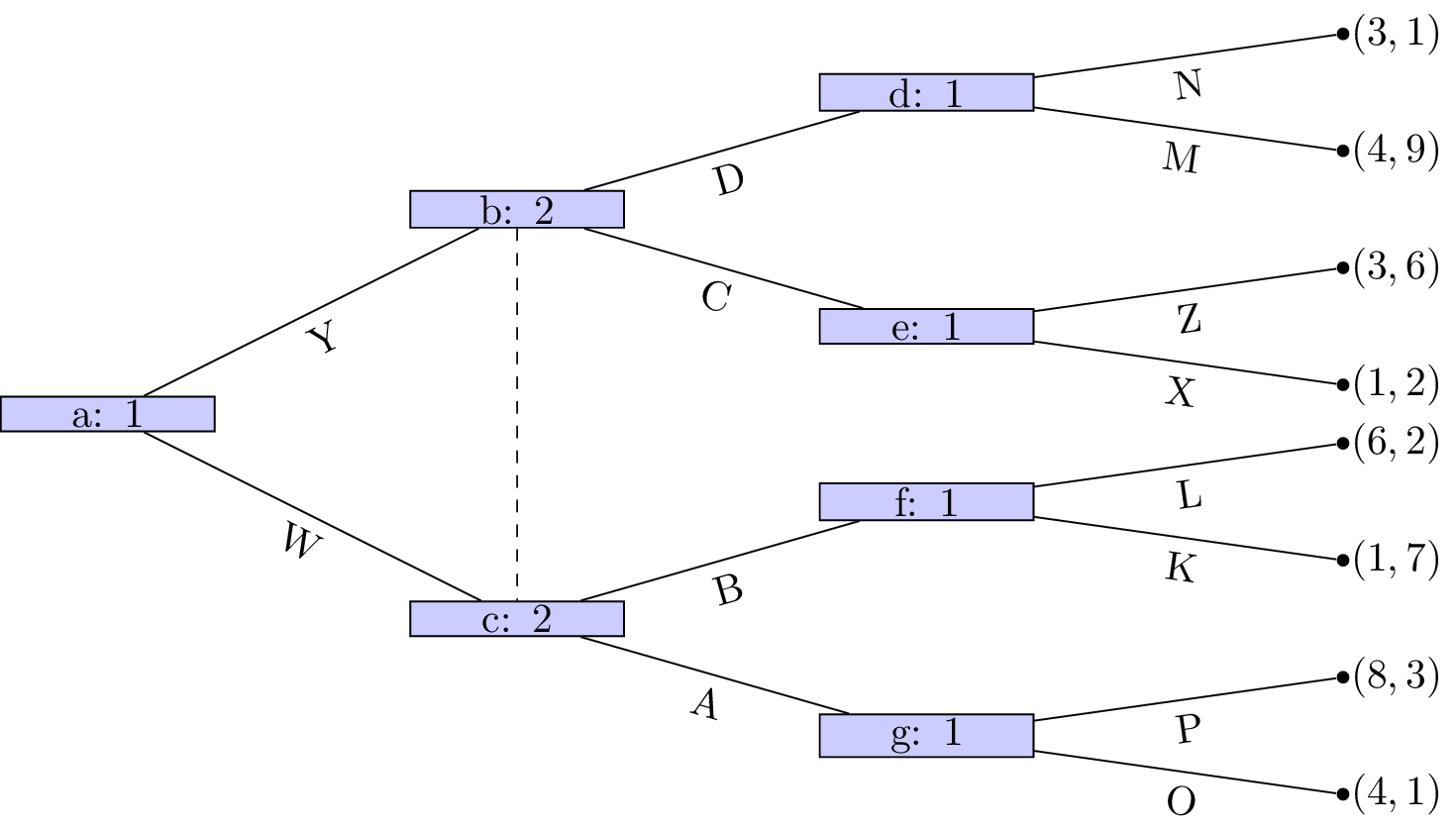
Solution
Not a valid game (node b and c are in same information set but have different action sets)
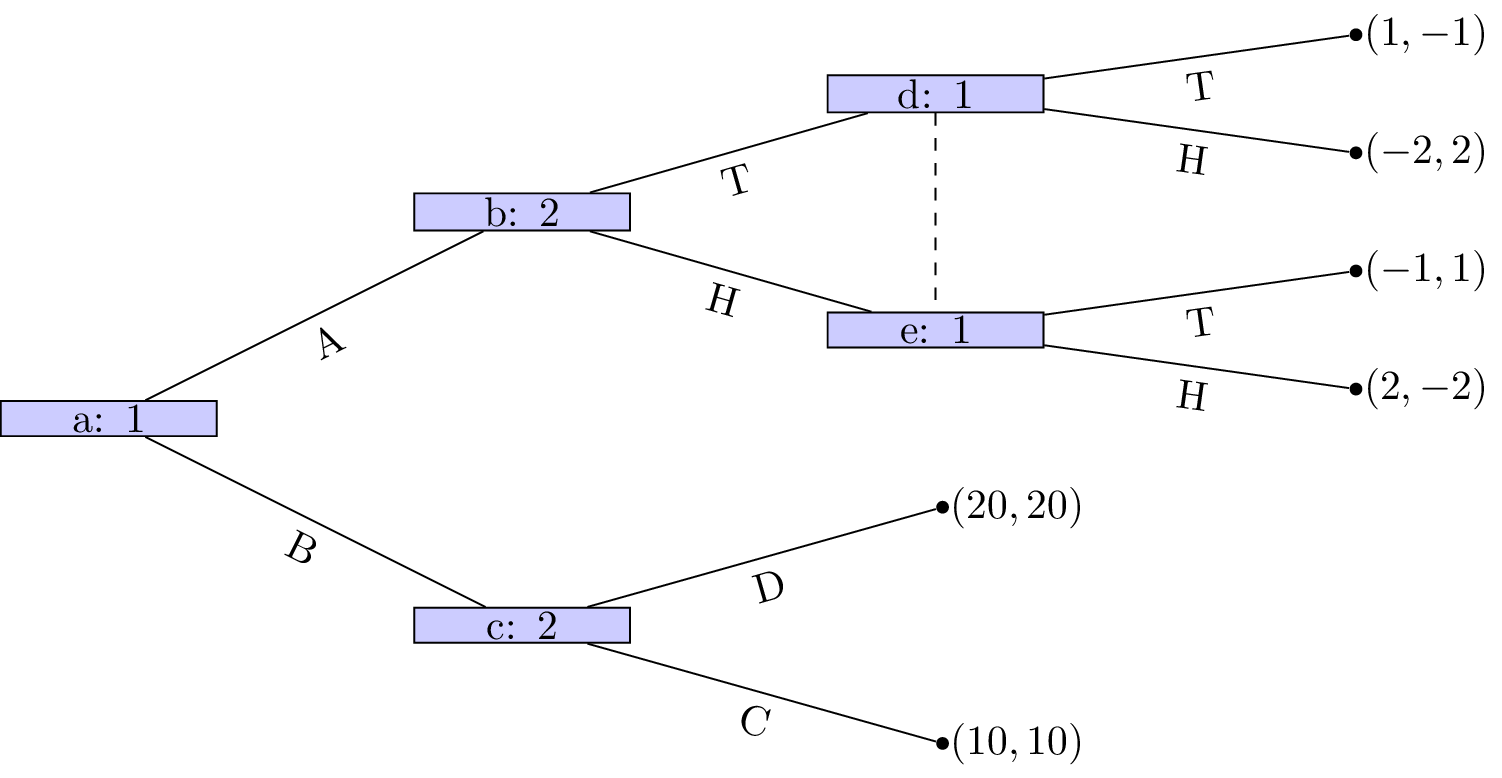
There are two subgames:
- Generated by node \(c\) (trivial)
- Generated by node \(b\)
The strategy sets are:
Here is the corresponding normal form representation:
By examining best responses we identify the following 4 pure Nash equilibria:
Looking at the subgame initiated at \(b\) (with \(S_1={H,T}\) and \(S_2={H,T}\)):
None of the above strategy pairs are Nash equilibria!
However (using the Equality of Payoffs theorem) we see that:
and
is a NE, and in fact is also a NE for the entire game (again using the Equality of Payoffs theorem).
-
For the following stage games:
- Plot all possible utility pairs for \(T=2\);
- Recalling that subgame perfect equilibrium for the repeated game must play a stage Nash equilibrium in the final stage attempt to identify a Nash equilibrium for the repeated game that is not a sequence of stage Nash profiles.
Solution
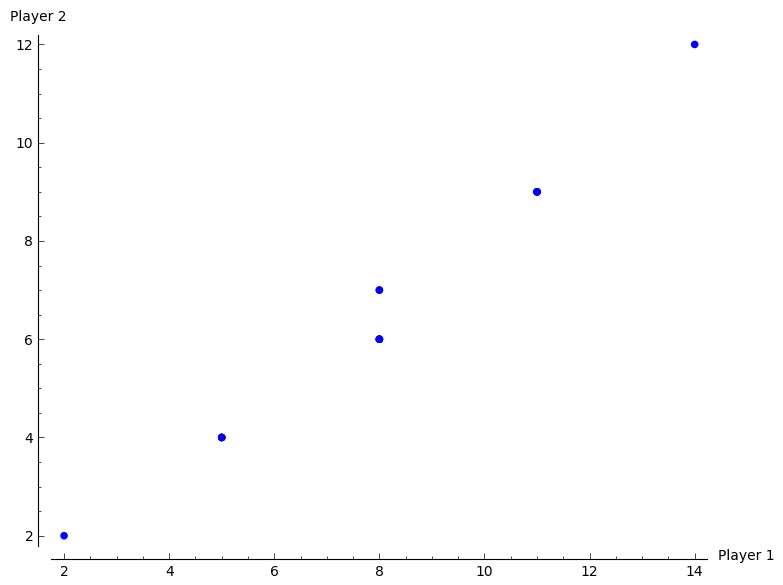 \
\No other strategy is subgame perfect.
Solution
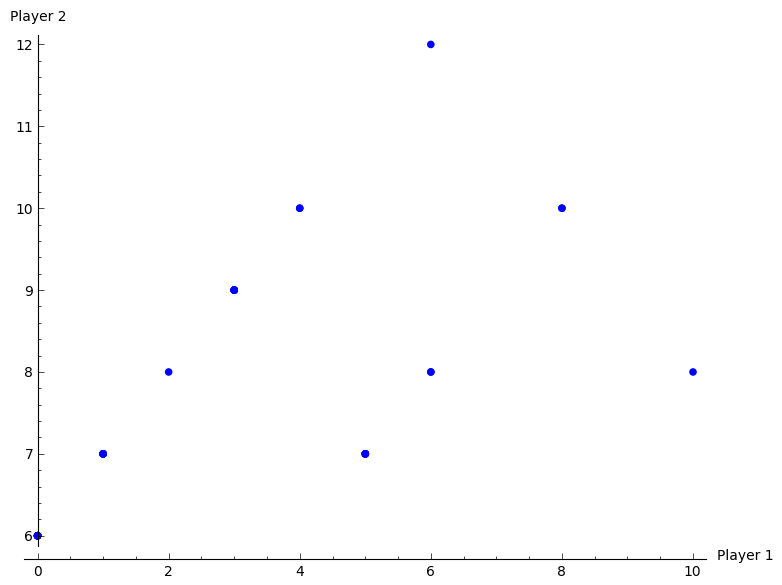
“Play \((r_3,s_1)\) in first round and \((r_1,s_1)\) in second round unless P1 deviates in which case play \((r_2,s_2)\).”
Outcome: \((8,10)\).
Deviate?
- P2: No incentive;
- P1: Gain 2 in 1st round but lose 4 in second round.
Solution
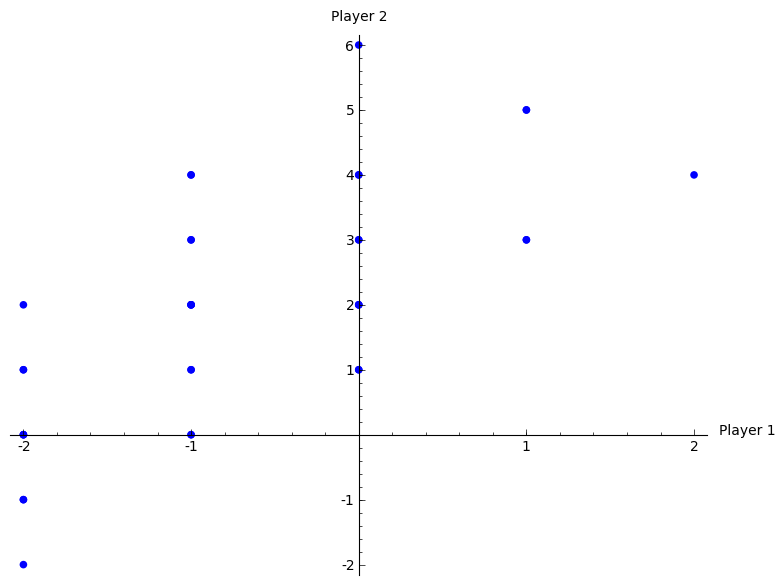
“Play \((r_1,s_1)\) in first round and \((r_1,s_2)\) in second round unless P2 deviates in which case play \((r_2,s_3)\).”
Outcome: \((1,5)\).
Deviate?
- P1: No incentive;
- P2: Gain 1 in 1st round but lose 2 in second round.
-
Consider the following stage game:
- For \(\delta=1/3\) obtain the utilities for the infinitely repeated game for the strategies \(S_D\): “play the first strategy throughout” and \(S_C\): “play the second strategy throughout”.
- Plot the space of feasible average payoffs and the space of individually rational payoffs.
- State whether or not it is possible according to the Folk theorem to obtain \(\delta\) that ensures that a strategy profile exists that would give a subgame perfect Nash equilibrium with average payoffs: \((3/2,3/2)\), \((0,3)\), \((2,6)\) and \((2,0)\).
Solution
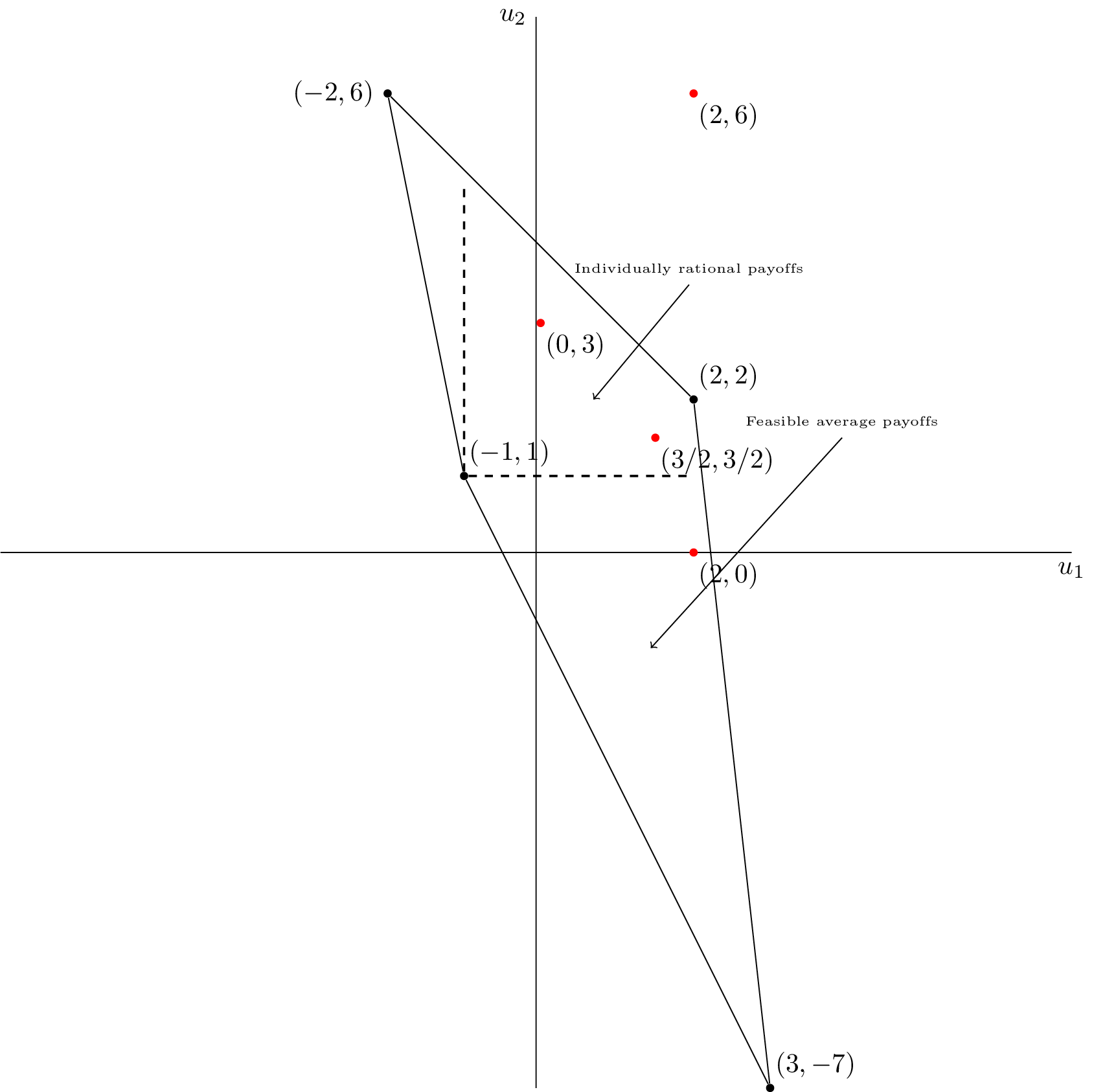
We see that it is possible to find a \(\delta\) for \((3/2,3/2)\) and \((0,3)\).